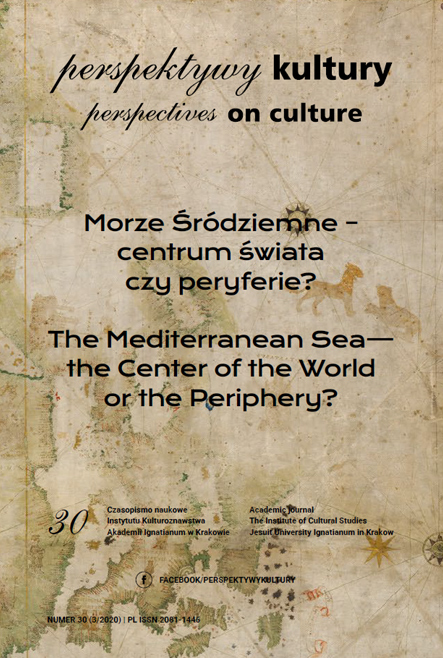Crossing Cultural Boundaries in Merchants’ Wills from 14th-Century Cyprus
Abstract
The Western merchants operating in Famagusta, Cyprus—including Genoese, Venetians, Catalans, Pisans, Provençals, other nationalities, and Cypriot merchants based in this port city—drew up wills with Genoese and Venetian notaries, a number of which are extant. These wills impart information on the bequests these merchants made to family members and friends as well as to institutions, particularly churches, monasteries, and mendicant orders. Furthermore, they record the credits and debts of these merchants to various parties, decree the manumission of slaves owned by the merchants—some of whom also received bequests—and on occasion list material objects such as clothing, silverware, or sums of currency in their possession. We can glean from these types of information that merchants had commercial and personal relations with members of nationalities or Christian denominations different to their own, had slaves of various ethnic backgrounds, and had in their possession currencies other than that of the Lusignan kingdom of Cyprus, as well as objects originating from elsewhere. These are phenomena that testify to their geographical mobility and their willingness to cross physical, financial, as well as cultural boundaries. On occasion, they even bequeathed sums of money to individuals and churches of non-Latin rites. In this paper, I intend to examine and assess the importance and utility of such wills, explaining that through their contents one can discover how, why and the extent to which merchants crossed national, ethnic and religious boundaries in both their commercial and their personal dealings. In addition, the limitations of the information such wills offer and the reasons why these limitations exist will also be discussed.
References
Balard, M. (Ed.). (1983). Notai Genovesi in Oltremare: Atti rogati a Cipro da Lamberto di Sambuceto (11 Ottobre 1296-23 Giugno 1299). Genoa: Istituto di Medievistica.
Balard, M. (Ed.). (1984). Notai Genovesi in Oltremare: Atti rogati a Cipro da Lamberto di Sambuceto (31 Marzo 1304-19 Luglio 1305, 4 Gennaio-12 Lug¬lio 1307) Giovanni de Rocha (3 Agosto 1308-14 Marzo 1310). Genoa: Isti¬tuto di Medievistica.
Balard, M., Duba, W., & Schabel, C. (Eds.). (2012). Actes de Famagouste du notaire génois Lamberto di Sambuceto (décembre 1200-septembre 1300). Nicosia: Cyprus Research Centre.
Pavoni, R. (Ed.). (1987). Notai Genovesi in Oltremare: Atti rogati a Cipro da Lamberto di Sambuceto (Gennaio-Agosto 1302). Genoa: Istituto di Medievistica.
Pavoni, R. (Ed.). (1982). Notai Genovesi in Oltremare: Atti rogati a Cipro da Lamberto di Sambuceto (6 luglio-27 ottobre 1301). Genoa: Istituto di Medievistica.
Polonio, V. (Ed.). (1982). Notai Genovesi in Oltremare: Atti rogati a Cipro da Lamberto di Sambuceto (3 luglio 1300-3 agosto 1301). Genoa: Istituto di Medievistica.
Abulafia, D. (1997). The western Mediterranean kingdoms 1200–1500. Lon¬don–New York: Longman.
Ashtor, E. (1983). Levant trade in the later Middle Ages. Princeton: Princeton University Press.
Bacci, M. (2014). Patterns of church decoration in Famagusta (fourteenth to sixteenth centuries). In A. Weyl-Carr (Ed.), Famagusta: Vol. 1. Art and architecture (pp. 203-276). Turnhout: Brepols Publishers.
Coureas, N. (1997). The Latin church in Cyprus 1195–1312. Aldershot: Ash¬gate Publishing Ltd.
Edbury, P. (1999a). Famagusta in 1300. In Kingdoms of the crusaders from Jeru¬salem to Cyprus (pp. XVI 337–353). Aldershot: Ashgate Publishing Ltd.
Edbury, P. (1999b). Famagusta society ca. 1300 from the registers of Lam¬berto di Sambuceto. In Kingdoms of the crusaders from Jerusalem to Cyprus (pp. XVII 87–95). Aldershot: Ashgate Publishing Ltd.
Epstein, S. (1996). Genoa & the Genoese 958–1528. Chapel Hill–London: University of North Carolina Press.
Fleet, K. (1999). European and Islamic trade in the early Ottoman state: The merchants of Genoa and Turkey. Cambridge: Cambridge University Press.
Friedman, Y. (2002). Encounter between enemies: Captivity and ransom in the Latin kingdom of Jerusalem. Leiden: Koninklijke Brill NV.
Jacoby, D. (2012). Camlet, manufacture, trade in Cyprus and the eco¬nomy of Famagusta from the thirteenth to the late fifteenth century. In M.J.K. Walsh, P.W. Edbury, & N.S.H. Coureas (Eds.), Medieval and Rena¬issance Famagusta, studies in architecture, art, and history (pp. 15–42). Farnham: Ashgate Publishing Ltd.
Jacoby, D. (2014). Refugees from Acre in Famagusta around 1300. In M.J.K. Walsh, T. Kiss, & N.S.H. Coureas (Eds.), The harbour of all this sea and realm: Crusader to Venetian Famagusta (pp. 53–67). Budapest: Central European University Press.
Mayer, H.E. (1990). The crusades. Oxford: Oxford University Press.
Olympios, M. (2014). Saint George of the Greeks and its legacy: A facet of urban Greek church architecture in Lusignan Cyprus. In A. Weyl-Carr (Ed.), Famagusta: Vol. 1. Art and architecture (pp. 143–202). Turnhout: Brepols Publishers.
Riley-Smith, J. (2002). The feudal nobility and the kingdom of Jerusalem 1174– 1277. Basingstoke–New York: Palgrave Macmillan.
Stantchev, S.K. (2014). Spiritual rationality: Papal embargo as cultural practice. Oxford: Oxford University Press.
Copyright (c) 2020 Jesuit University Ignatianum in Krakow

This work is licensed under a Creative Commons Attribution-NoDerivatives 4.0 International License.
Autor, zgłaszając swój artykuł, wyraża zgodę na korzystanie przez Wydawnictwo Uniwersystet Ignatianum z utworu na następujących polach eksploatacji:
- utrwalania utworu w formie papierowej, a także na nośniku cyfrowym lub magnetycznym;
- zwielokrotnienia utworu dowolną techniką, bez ograniczenia ilości wydań i liczby egzemplarzy;
- rozpowszechniania utworu i jego zwielokrotnionych egzemplarzy na jakimkolwiek nośniku, w tym wprowadzenia do obrotu, sprzedaży, użyczenia, najmu;
- wprowadzenia utworu do pamięci komputera;
- rozpowszechniania utworu w sieciach informatycznych, w tym w sieci Internet;
- publicznego wykonania, wystawienia, wyświetlenia, odtworzenia oraz nadawania i reemitowania, a także publicznego udostępniania utworu w taki sposób, aby każdy mógł mieć do niego dostęp w miejscu i czasie przez siebie wybranym.
Wydawca zobowiązuje się szanować osobiste prawa autorskie do utworu.





